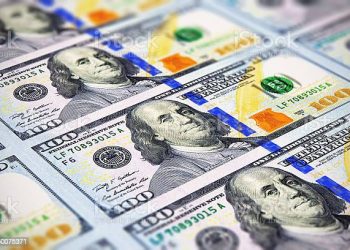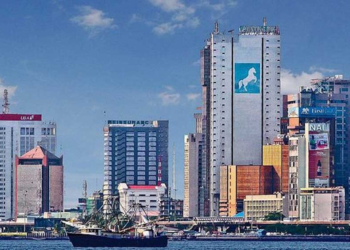Port congestion and a shortage of container shipping capacity may last into the fourth quarter or even mid-2022,” said Hsieh Huey-chuan, president of Taiwan-based Evergreen Marine Corp., the world’s seventh-biggest container liner, at an investor briefing on Aug. 20. “If the pandemic cannot be effectively contained, port congestion may become a new normal.”
Read More: Why Shipping by Sea Struggled to Adapt to Pandemic: QuickTake
The cost of sending a container from Asia to Europe is about 10 times higher than in May 2020, while the cost from Shanghai to Los Angeles has grown more than sixfold, according to the Drewry World Container Index. The global supply chain has become so fragile that a single, small accident “could easily have its effects compounded,” HSBC Holdings Plc. said in a note.
Ocean View
Spot rates for shipping containers from China to U.S., Europe hit new high
Higher freight rates and semiconductor prices could feed into inflation, said Chua Hak Bin, senior economist at Maybank Kim Eng Research Pte. in Singapore. In addition, producers including Taiwan’s Giant Manufacturing Co., the world’s biggest bicycle maker, say they will raise prices to reflect the increased costs.
In the U.S., forecasters have lowered growth projections for this year and lifted inflation expectations into 2022, according to Bloomberg’s latest monthly survey of economists. Compared to a year earlier, the personal consumption expenditures price index is now expected to rise 4% in the third quarter and 4.1% in the fourth, double the Federal Reserve’s 2% goal.
Hong Kong-based coffee-machine maker Eric Chan doesn’t see the crunch easing for months as he juggles a supply line that involves hundreds of components to meet booming demand for kitchen appliances.
“We are storing up critical components for one year of usage because if we miss one component, we cannot manufacture the products,” said Chan, chief executive of Town Ray Holdings Ltd., which gets 90% of sales from household brand names in Europe.
The spread of the delta variant, especially in Southeast Asia, is making it difficult for many factories to operate at all. In Vietnam, the world’s second-largest producer of footwear and clothing, the government has ordered manufacturers to allow workers to sleep in their factories to try to keep exports moving.
Even mighty Toyota Motor Corp. is affected. The automaker warned this month it will suspend output at 14 plants across Japan and slash production by 40% due to supply disruptions including chip shortages.
On the other side of the planet, companies in the U.K. are grappling with record low levels of stock and retail selling prices are rising at the fastest pace since November 2017.
Germany’s recovery is also under threat. A key measure of business confidence in Europe’s largest economy, released on Wednesday by the Munich-based Ifo institute. fell by more than economists had predicted with the drop blamed in part on shortages for metals, plastic products and semiconductors, among other goods.
What Bloomberg Economics Says…
It is hard to see supply chain bottlenecks being resolved any time soon, with some major exporters including Indonesia and Vietnam still struggling to contain the delta outbreak. It could continue to drag on the global recovery by slowing production and pushing up costs, although not derailing it.
Chang Shu, chief Asia economist
At the heart of the price pressures is the transportation bottleneck.
Big retailers tend to have long-term contracts with container lines, but Asian production relies on networks of tens of thousands of small and medium-sized producers who often arrange shipping through logistics firms and freight forwarders. They in turn have been struggling to secure space for clients as vessel owners sell to the highest bidders.
Some 60% to 70% of shipping deals on the Asia-America route are done through spot or short-term deals, according to Michael Wang, an analyst at President Capital Management Corp. He said auction-style pricing may continue until Chinese New Year in February 2022.
Buyers agree. In Germany, more than half of the 3,000 firms polled by the Association of German Chambers of Industry and Commerce expected widespread supply-chain problems to persist into next year.
‘No Choice’
“Now container liners don’t sign long-term agreements, and most deals are done by spot prices,” said Jason Lo, CEO of Taiwanese gym equipment maker Johnson Health Tech Co. He said it was becoming impossible to estimate shipping costs and do financial planning, but “we have no choice.”
Colin Sung, general manager of Dongguan-based World-Beater International Logistics Co., said one client had more than 70 containers of goods sitting at a warehouse in Shenzhen because his American buyer didn’t want to pay the shipping cost. Sung said 60% to 70% of his clients have cut shipments due to rising costs.
Choke on the Water
For Asian factories outside China, the problem is even worse. Many Chinese companies are willing to pay above-market rates to load their cargo, said a spokesman at HMM Co., South Korea’s biggest container line. So when the ships call at ports outside China, they’re already almost full.










